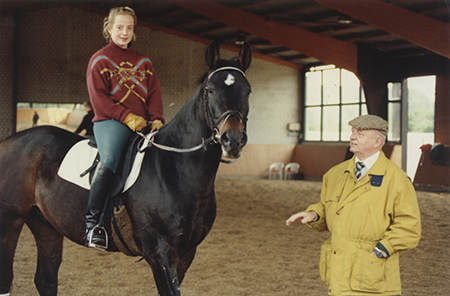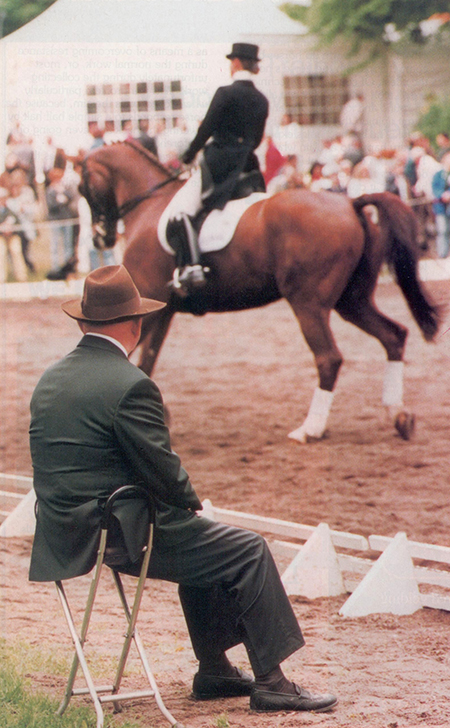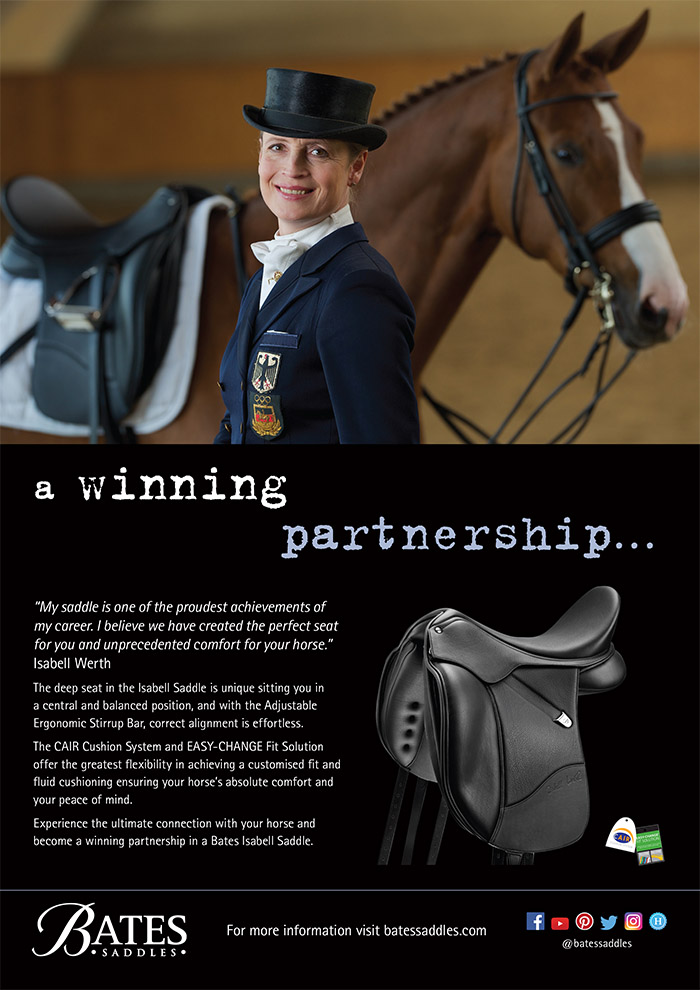It has been often said that a lifetime is not long enough to learn everything about dressage. However the late Dr Schulten-Baumer must have been close to this goal. Here is a tribute written by Bernadette Faurie to Dr Schulten-Baumer in 1996. Dr Schulten-Baumer died in 2014.
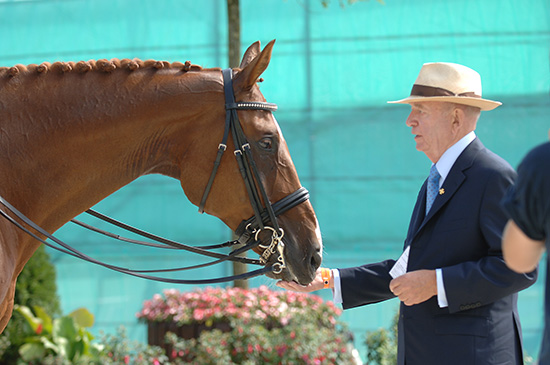
Dr Schulten-Baumer gives a sugar lump to one of the last horses he trained, his grand-daughter’s Lesoto
When he was asked to stand up and expound his opinions at last winter’s International Trainers Club conference in Germany, Dr Schulten-Baumer remained seated in the company of the world’s professional trainers, saying for him it was ‘just a hobby’.
Make no mistake there is no false modesty here, just a genuine humility. Colleagues, riders and followers of the sport may prepare the pedestal, but Doctor is not a man to step on to it willingly. He is quick to deflect admiration to the direction of his star pupil, three times European Champion Isabell Werth.
Dr Uwe Schulten-Baumer’s interest in horses began in one of the two time honoured ways. Not the first, coming from a horsey family, but the second – getting up at 5 am to muck out and groom in return for rides. “At the back of my school was a riding school. It proved too great an attraction and I used to go every day before my ‘real’ lessons started.”
Although he started riding aged seven or eight, it was to be a good while before the young Schulten-Baumer had a horse of his own. His first horse was given to him by a local farmer. “He was a jumper and not an easy horse, but that is how you learn a lot and I was proud to win the school’s best rider competition on him.”
The basic interest in equitation was always there, but war intervened as did work and it was later that the ‘Doctor’s’ passion for dressage was to be sparked off by his second horse, an eventer. The German Federation asked if Schulten-Baumer would lend this horse to the legendary Fritz Ligges to ride in the 1964 Tokyo Olympics but it was found to have a wind problem. So Doctor took him home and started to do dressage with him.
It was through his children, Uwe junior and Alexa, that Dr Schulten-Baumer was to come to prominence as a trainer. Uwe, now a busy consultant in a hospital was the man to beat in the early eighties. German National Champion in 1979, ’80 and ’82, a string of Grand Prix and Special victories in the ‘hottest’ venues – Aachen, Berlin, Dortmund and Rotterdam were crowned with the 1981 European Championship where they finally triumphed over Christine Stückelberger and Granat who had kept them in silver medal position in the 78 World Championships and the 1980 ‘alternative’ Olympics. His two best known horses were Slibowitz and Madras.
Alexa, now busy with family and two children, has some horses at her home near Wuppertal, her father informs with a smile of pleasure. She, in fact, won the Goodwood Grand Prix in ’81 on Madras before her brother took him to Austria to win European gold.
Already by this time, the Schulten-Baumer team were renowned for the ‘deep and round’ way of working outside the ring. It has since been adopted into the training methods of various top riders in slightly different forms, but it was Schulten-Baumer’s ‘baby’.
Apart from anything else, Schulten-Baumer horses are stamped by the fluency and lightness of the most enviably ‘through’ transitions (never a hind leg out of place!) and supremely confident extensions in perfect balance. You won’t spot them by similarity of type.
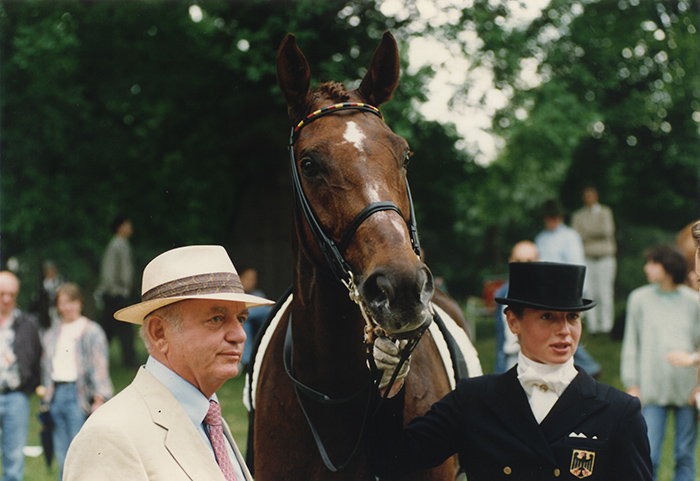
Dr Schulten-Baumer, Gigolo and Isabell
In the Schulten-Baumer stable, the tall Nobilis Gigolo FRH rightly has pride of place but among the other residents of the bright, neat, purpose built complex are four other Grand Prix horses, Antony, Amaretto, Fabienne, the graded stallion Welcome, small tour star Aurelius and the youngsters beginning their careers under the Schulten-Baumer/Werth tutelage.
“All horses are different. What we want to do is give each horse the chance to realize its maximum potential – to find the key to bring out its special talent and personality” explains Dr Schulten-Baumer. In looking for new potential stars, which are quite often acquired at auction, he says: “I usually buy horses on the spur of the moment – otherwise if I took Isabell to try them they would become too expensive. I look at the horse, the movement, and assess what effect the rider is having – whether it is under a good rider or not, then I try to create a picture in my mind of what the horse would be like when developed.”
Doctor does not sell horses bar the occasional exception. He refers to the spruce indoor school which keeps the winter weather at bay but with its three sides of windows that don’t keep the light out or cloister the horses from the scenery outside. Here Doctor sits in his ‘cabin’, recently built to provide a warm comfy environment from which to watch over his protégés. “I don’t like to get too cold these days” he says.
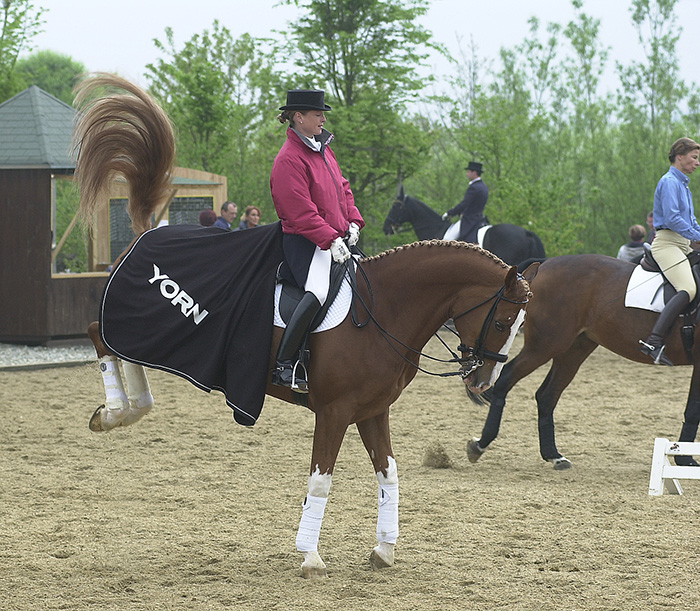
Aleppo feels good in the warm-up, Isabell is not concerned
As Isabell works, the two are so attuned that it is a matter of the odd comment or a bit of discussion that punctuates each horse’s session in the school. The atmosphere is totally relaxed. A youngster’s early morning bucks are greeted with a giggle by Isabell and a benevolent smile from ‘Doctor’. “She has so much feel” says ‘Doctor’, “She just plays with them” he adds indulgently, as after verbal encouragement worthy of true pony clubber, Isabell flings her arms round the neck of the stables’ latest addition, a five-year-old Florestan mare, who has just responded with enthusiasm to an early piaffe lesson.
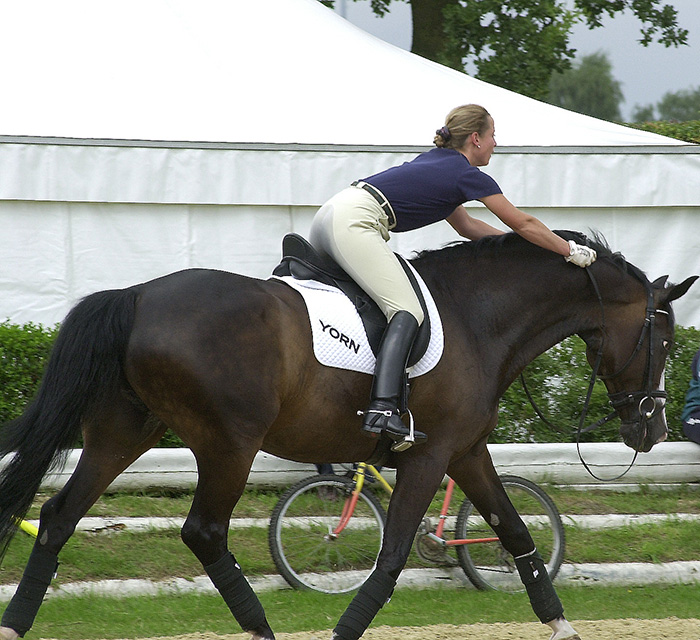
Antony and Isabell have a stretch at the end of a warm up working session at the 2002 Euros
The horses also respond with equal enthusiasm to the sugar they get at the beginning and end of each session – they know exactly where the sugar box is! They also all have their turn in the field, except Gigolo and Anthony. Isabell says: “They are just too daft!”
“We are fortunate to be able to work here without the stresses that are a part of many riders’ lives” Dr Schulten-Baumer explains, “There is no pressure that the horse might be sold or go to another rider or for quick results – we can take all the time we need.”
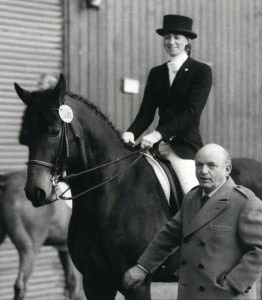
Nicole Uphoff and Dr Schulten-Baumer
It is also a self sufficient team. Doctor does not take outside pupils. He helped Nicole Uphoff for a time when she had Rembrandt at home in nearby Duisburg.
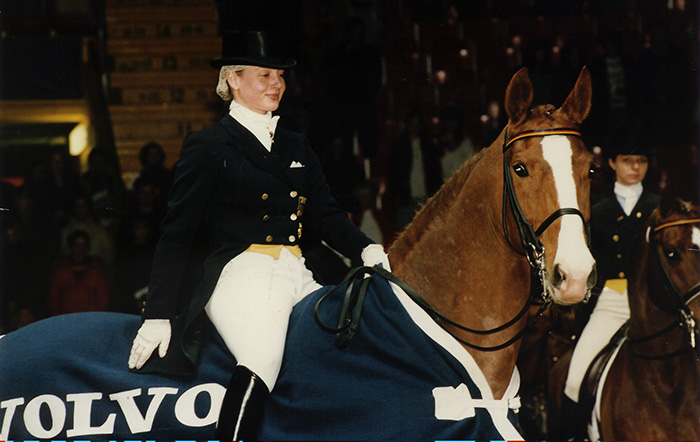
Isabell and Fabienne, winners of the World Cup in 1992
Currently he concentrates solely on Isabell and on Young Rider Susanne Doern, whose horses are also based at the yard. She and her sister have an impressive string including top PSI purchase German Classic and Bundeschampionat winner and she is currently benefiting from the experience of Fabienne, the mare who partnered Isabell to victory in the 1992 Volvo World Cup final.
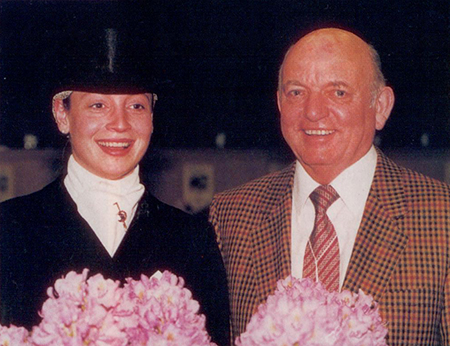
Isabell and the Doctor after winning the World Cup Finals in 1992
Isabell started riding with Dr Schulten-Baumer nine and a half years ago, when his children were diverting in other directions. He spotted her at the local riding club, where they used to go and work the horses before the indoor school was built at home. Isabell learnt a lot from Madras, but in something of a parallel with her mentor, the horse who was to take her from Young Riders to her first senior team medal was Weingart, who had gone to Ulli Kasselmann’s to be sold but no prospective buyers were able to ride him.
“He was not easy” Isabell remembers, “He knew all the exercises, he wanted to do it but the fun had gone out of it for him and he did not have the easiest musculature for the job. For me it was really important to have a difficult horse first because I learnt so much.”
Isabell appreciates her good fortune in riding a string that is the envy of every international rider, and the extraordinary insight of her mentor. “There are a lot of good riders in the world who never have the opportunity to show it. The chance Dr Schulten-Baumer gave me has changed my life. It is the greatest luck in the world to be able to ride in my situation.”
That element of fun is always present but so is the hard work and dedication. Before Doctor retired a few years ago as head of a steel conglomerate in Düsseldorf, it was work every evening for the team from six until they finished. Even now, there are the instruments of business – including a hi-tech telephone – in Doctors’ cabin in the school and Isabell is combining her career as an international rider with law studies. The two have work and horses, and little time for anything else. Dr Schulten-Baumer himself stopped riding a few years ago “when my breeches became too small!” A philosophy he applied in his business life also applies to his training methods. “If it doesn’t feel right, don’t do it.”
The essence of his training is all about developing looseness and gymnastic ability. His essential tool is the half-halt. “The horse has to understand the meaning of the half-halt. It is the basis for piaffe and passage.” His timing and Isabell’s feel combine in the next ingredient: “To take what the horse offers, when he offers it. What is important for me is the making of the horse and the realisation of his potential”.
Schulten-Baumer learned from a lot of different trainers and riders, took different elements and put them together to his own recipe. The special ingredient is the team work, with the relationship between horses, rider and trainer all based on a mutual respect and recognition of each other’s talents. But as his pupil proudly relates, Dr Schulten-Baumer was known in his business life as ‘the King of Steel’. There is the feeling that in the dressage world he will go down in history with a similar title.
Words by Bernadette Faurie
This article was first published in July 1996



